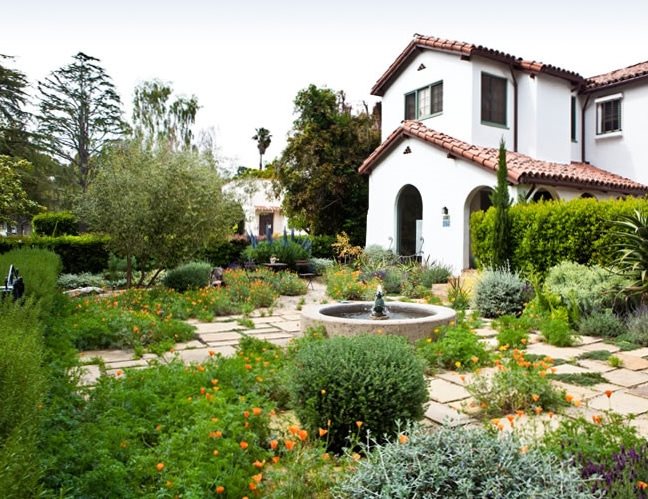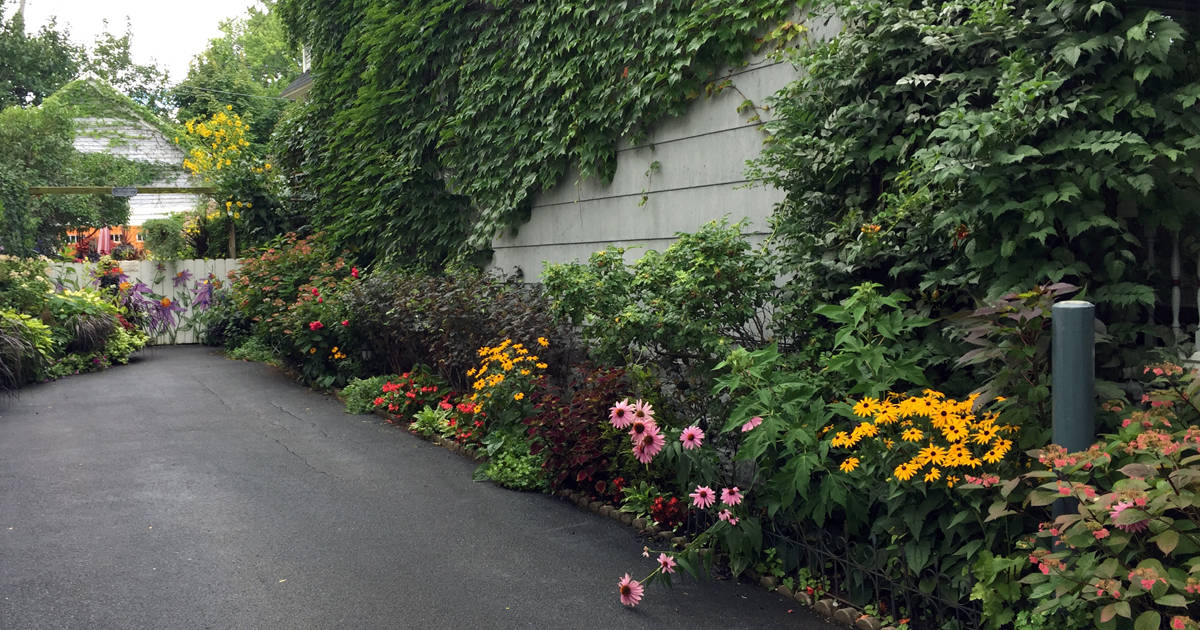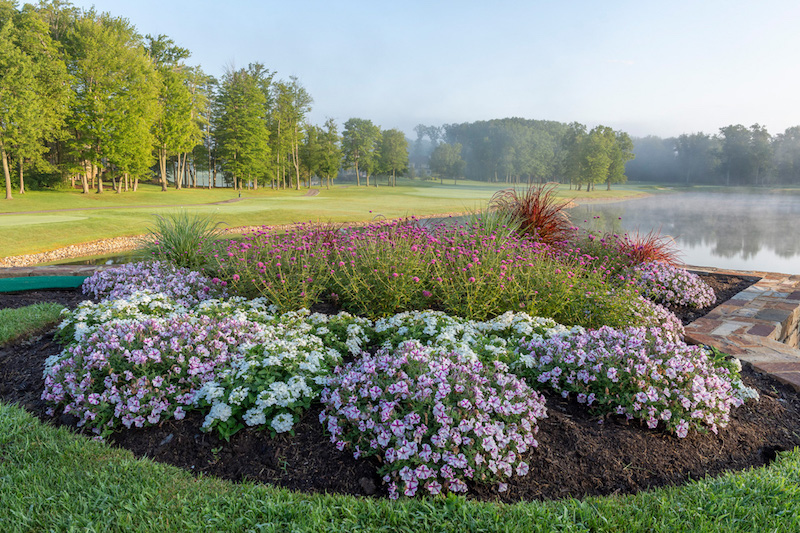The Hilton Head Landscapes PDFs
The Hilton Head Landscapes PDFs
Blog Article
Facts About Hilton Head Landscapes Revealed
Table of ContentsThe Hilton Head Landscapes DiariesNot known Details About Hilton Head Landscapes About Hilton Head LandscapesThe Ultimate Guide To Hilton Head LandscapesThe 20-Second Trick For Hilton Head LandscapesAn Unbiased View of Hilton Head LandscapesAll about Hilton Head LandscapesThe Single Strategy To Use For Hilton Head Landscapes
Kind compatibility is likewise a major part of unity in designone or 2 strikingly various types benefit comparison and emphasis, yet normally all other types need to have some similarities for a combined appearance. Appearance refers to how coarse or great the surface area of the plant or hardscape material really feels and/or looks.
Instances of plants with coarse structure consist of philodendrons, agaves, bromeliads, hollies, hands, and hydrangeas. Hardscape with crude appearance consists of rough-cut stone, rough-finished brick, and incomplete timber with knots and an elevated grain. Matured or old construction product that maintains a weather-beaten surface is commonly crude in texture. Characteristics that produce great appearance consist of small foliage; thin, strappy leaves (yards) or high, thin stems; tiny, thick twigs and small branches; long stems (creeping plants); and tiny, fragile blossoms.
The 6-Second Trick For Hilton Head Landscapes
Most plants are medium structure, in that they can not be described as having either crude or fine structure. Medium-textured plants act as a history to web link and unify the crude- and fine-textured plants.

To make a room really feel smaller sized, position the rugged structures along the external border and the fine textures closest to the visitor. The detail of the rugged appearance makes the plants appear closer and makes the room really feel smaller sized. The perceived texture of plants can likewise alter with the distance from the plant.
Examine This Report about Hilton Head Landscapes
Strong shades raise the comparison and make the structure appear coarser, while muted colors can flatten texture. Hardscape with a rugged texturesuch as extremely rough rocks and bold, huge timberstends to make all plant product show up more medium distinctive. Developers often establish a structure study (Number 8) on paper to aid make a decision the plan of plant products.
Color in plant material and hardscape adds rate of interest and range to the landscape. Color is the most obvious element in the landscape and is typically the focus of the majority of home owners; nonetheless, it is additionally the most short-term element, normally lasting just a couple of weeks a year for specific plants.
Things about Hilton Head Landscapes
A basic description of the shade wheel includes the 3 primaries of red, blue, and yellow; the 3 additional shades (a mix of 2 primaries) of green, orange, and violet; and six tertiary shades (a mix of one surrounding primary and second color), such as red-orange. Shade theory explains the partnership of colors per other and how they need to be utilized in a make-up.

Comparable (occasionally called harmonious) color pattern are any three to five shades that are surrounding on the color wheel, such as red, red-orange, orange, yellow-orange, and yellow, or blue, blue-violet, and violet (bluffton landscaping). The shades relate to each other because they usually consist of two primaries mixed to develop a secondary and two tertiary shades, which indicates they share usual buildings
They tend to have high contrast between them. One of the most usual collections are violet and yellow, red and green, and blue and orange. Complementary shades are often located naturally in blossoms; a typical pair is yellow and violet. Color is found in the flowers, vegetation, bark, and fruit of plants.
Some Of Hilton Head Landscapes
Environment-friendly vegetation in all its various tones is the dominant shade by amount, but various other shades record attention extra readily as a result of their high comparison to the shade green. Color is also located in buildings, rocks, pavers, timber, and furniture. The majority of colors in all-natural products, such as rock and wood, are commonly muted and often tend to be variants of brownish, tan, and pale yellow.
Shade is an important component for producing rate of interest and selection in the landscape. Shades have properties that can influence feelings, spatial understanding, light quality, balance, and emphasis. One building of shade is described relative to temperaturecolors seem cool or warm and can click here to find out more impact emotions or sensations. Amazing colors often tend to be relaxing and need to be made use of in areas for leisure and serenity.
Rumored Buzz on Hilton Head Landscapes
The "temperature level" of colors can likewise influence the assumption of range. Cool shades have a tendency to recede and are viewed as being further away, making a space really feel bigger. Warm shades often tend to advance and are viewed as being more detailed, making a room really feel smaller sized. Color can also be used to capture interest and direct views.
For example, intense yellow, which has the highest possible strength, also has a high comparison with all various other shades (often described as a "pop" of color) and need to be conserved. A percentage of intense shade has as much aesthetic weight as a big amount of a more subdued or weak shade.
Analogous (often called harmonious) color pattern are any kind of three to five shades that are surrounding on the color wheel, such as red, red-orange, orange, yellow-orange, and yellow, or blue, blue-violet, and violet. The shades belong to each various other since they normally consist of two primary shades blended to develop a secondary and two tertiary colors, which means they share typical properties.
What Does Hilton Head Landscapes Mean?
They tend to have high contrast in between them. The most typical collections are violet and yellow, red and green, and blue and orange. Corresponding colors are often found normally in flowers; an usual pair is yellow and violet. Shade is located in the flowers, foliage, bark, and fruit of plants.
Environment-friendly vegetation in all its various shades is the dominant color by quantity, but various other colors capture attention a lot more conveniently due to their high contrast to the shade eco-friendly - hilton head landscapers - https://slides.com/h1tnhdlndscps. Color is likewise discovered in structures, rocks, pavers, wood, and furniture. Most colors in all-natural products, such as stone and timber, are usually muted and often tend to be variations of brown, tan, and light yellow
4 Simple Techniques For Hilton Head Landscapes
Colors have residential properties that can influence feelings, spatial understanding, light quality, balance, and focus. Amazing colors often tend to be soothing and need to be used in locations for leisure and peacefulness.
The "temperature" of shades can likewise impact the understanding of distance. Cool shades tend to decline and are viewed as being further away, making a space really feel bigger. Cozy shades often tend to advance and are regarded as being better, making a room feel smaller sized. Shade can also be made use of to catch attention and straight views.
As an example, bright yellow, which has the greatest intensity, also has a high contrast with all other shades (frequently explained as a "pop" of color) and must be used sparingly. A percentage of intense shade has as much aesthetic weight as a huge quantity of an extra suppressed or weaker color.
Report this page